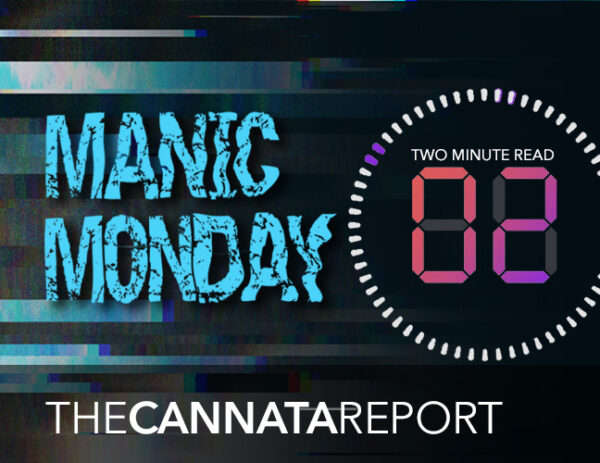Workflow and web-to-print software adds value to production print hardware sales and makes you stickier with the customer.
Attend any large print show such as Print or PRINTING United, and the focal point for most visitors is the hardware in various shapes and sizes that dot the show floor, along with the output spewing from those devices. But there’s another important element not as visible to visitors mesmerized by the machine’s performance and output—the software driving these devices and managing that output. Indeed, without the software, these devices would just be another box.
Essential software in the production print space includes workflow and web-to-print solutions. Some of this software is developed by third-party software providers and others by hardware vendors such as Canon, EFI, Konica Minolta, Ricoh, and Xerox, to name just a few, and others are homegrown, developed by the customer.
Perhaps the most essential all is workflow software, which also includes web-to-print solutions.
Dealers selling workflow software are typically replacing a competitor’s product, which might be a solution recommended by the hardware vendor, a solution developed in-house, or are automating the customer’s workflow for the first time. The latter, according to Anthony Lecesse, product manager, Rochester Software Associates, represents the most common scenario. But there is no hard and fast rule as to which customer is the easiest sale.
For those businesses with a homegrown solution, the need to find an agnostic solution that works with any printing device is key. The pandemic has illuminated this situation and raised even more awareness for agnostic solutions.
“A lot of places are reevaluating because it puts them at great risk if only one person knows how to use it and for whatever the reason, that person is no longer able to maintain it,” explained Lecesse.
Meanwhile, customers who are dissatisfied with a competitive product were often sold a solution that didn’t do what they thought it would, or the salesperson didn’t understand the customer’s requirements. The support piece is another critical factor as to why an organization might want to replace their existing software.
The Benefits of Workflow Software
Workflow software can increase productivity, reduce costs, maximize printer utilization, and improve job turnaround time. The right workflow solution accepts most print protocols and file formats and can facilitate transforms, conversions, and customs for making a file print ready.
Some workflow solutions are particularly useful for complex variable-data jobs such as customer letters, packing lists, postcards, and ID cards from repeatable data feeds.
A workflow solution enhances the management of print jobs. Jobs can be grouped and batched together based on similar attributes such as paper stocks, finishing requirements, or delivery destinations. Workflow software also enables the routing of jobs to the best available printer based on job requirements and printer status. If a printer is down, a job can be re-routed to another device. The software also allows jobs to be pre-flighted, and barcodes added to guide finishing equipment for more efficient processing, as well as facilitate color split and cluster printing, which can reduce costs and save time.
Web-to-print software is also an important element of the workflow. It allows customers to submit print jobs online. Benefits of online job submission include convenience for the customer, fewer errors, reduced manual intervention, and improved turnaround time. Market research firm InfoTrends reports that online order to job creation is used by 47% of commercial printers and 57% of in-plants. Examples include WebCRD from Rochester Software Associates and PressWise.
Target Markets
In-plants and print shops are primary targets for workflow and web-to-print solutions. Many print shops employ multiple brands and different types of printers. This mix might have created a challenge at one time for proprietary software, but multiple brands or types of printers are no longer an issue for the latest workflow. Indeed, most current workflow solutions are compatible with the majority of production print hardware. The same is true if the customer works with different brands and types of digital front ends (DFEs). A universal output management solution such as QDirect from Rochester Software Associates can control and automate workflows, route jobs, and manage output across an enterprise, while also eliminating concerns about printer types, printer brands, and DFEs.
Selling the Solution
Before you discuss the benefits of workflow software with a customer or prospect, examine what’s happening on the printshop floor. What’s the makeup of the customer’s printer environment? For example, are there multiple and/or different brands of printers outputting jobs? What kinds of jobs are running through those printers and at what volumes? Does the customer know the current status of the jobs in their shop?
Asking questions like these is critical. Be sure to inquire about the daily challenges of processing print jobs. Ask about the manual steps involved in the process, mistakes, and if the shop has missed deliveries—challenges that can be addressed with workflow software.
For example, if a customer tells you he is outsourcing jobs because of slow throughput, more robust printers could resolve that issue (another hardware sale!), as could software that facilitates job control and automated workflows.
How the customer or prospect responds to these questions can help justify a workflow solution.
Don’t Miss Out
The 2020 North American Production Software Outlook from InfoTrends offers compelling data about the current and future state of the workflow and web-to-print software markets. For example, the average percentage of print volume produced in a 100% automated workflow is only 12% today, with the average percentage predicted to rise to 24% by 2020.
This represents a big opportunity for dealers involved in production print. With significant percentages of commercial printers and in-plants still not fully automating these processes, and equally large percentages only partially automating, there is a need for software—whether it’s a first-time buyer or a buyer interested in upgrading their current software—that elevates these organizations to the next level of automation.
Much of the opportunity for workflow software is with commercial printers and in-plants. Family-owned commercial printers and smaller commercial printers often have a reputation for being notoriously slow to upgrade legacy systems and software, but that doesn’t mean a production print dealer can’t provide a software solution compatible with legacy systems. Increasing throughput and shortening production times can be accomplished by automating the workflow with workflow software.
Another notable characteristic of commercial printers and in-plants is a preference for big print jobs because less time is needed for set-up. Set it and forget it! It’s the small print jobs that give them headaches, according to InfoTrends research. Fully 60% of corporate in-plants deemed dealing with large numbers of small print jobs an issue. That means these customers are likely to be interested in a more efficient way of handling smaller jobs.
There are plenty of vertical markets that would benefit from a workflow solution, including mail houses, financial institutions, pharmaceutical companies, K-12, universities, farm bureaus, and non-profits.
I’m Sticking with You
The important thing to remember about software is that it is sticky. If you are fortunate to make that sale, the customer isn’t likely to be switching to something else in another year or two, as long as the solution delivers as promised and you do a good job of maintaining that customer relationship through frequent communications.
In the world of production print, it is easy to focus on the box and the output. However, the software that streamlines workflow and enhances efficiencies can create even more opportunities.
Access Related Content
Visit the www.thecannatareport.com. To become a subscriber, visit www.thecannatareport.com/register or contact cjcannata@cannatareport.com directly. Bulk subscription rates are also available.



